Viskovatov V.V. "Historical description of clothing and weapons of the Russian troops from ancient times." Part of 4
157. ROW L.Gv. Preobrazhensky Regiment, from 1700 to 1720 year
158. Fuseler L.-Gv. Preobrazhensky Regiment, from 1700 to 1720 year. The view depicts part of the city and the fortress of Narva, conquered by Russian troops in 1704.
159. Fuseler L.-Gv. Preobrazhensky Regiment, from 1700 to 1720 year. The view depicts a daub structure on the bank of the Neva River, on the site of the present Palace Embankment in S. P-Burg as it was in the early years of this city.
160 - 161. HATS of Officers and Lower Ranks, from 1700 to 1732 in Fuzei a) 1701, b) 1710, c) 1717 and d) 1723's.
162 - 163. Baginet, Swords and Harness, from 1700 to 1732 of Infantry Sumy, from 1700 to 1732 year
164. CAPTENARMUS, CAPRAL, SERGEANT and FOURIER L.-GV. Preobrazhensky Regiment, from 1700 to 1720 year.
165. Sergeants, Kaptenarmu and Fourier, Halberds, from 1700 to 1732
166. OBER-OFFICER and STAFF-OFFICER L.-GV. Preobrazhensky Regiment, from 1700 to 1732 year.
167-168. Officers, Aubert and Headquarters Officer Scarves, from 1700 to 1732 year. Aubert and Staff Officer Partasans, from 1700 to 1732 a year.
169. ROW GRENADER L.-GV. Preobrazhensky Regiment, from 1700 to 1732 year.
CAP Guards Grenadier, from 1705 to 1732-th year.
171-172. HAT Guards Grenadier Officers, from 1705 to 1732 year. Grenadier, Pikiner and Dragoon ladies, from 1700 to 1732 year.
173. GRENADER OBER-OFFICER L.-GV. Preobrazhensky Regiment, from 1700 to 1732 year. The view depicts the house of Peter the Great, in the Yekaterinental Garden, in Revel.
174. Picker L.-Gv. Preobrazhensky Regiment, from 1700 to 1720 year.
175. Pikeman spear and Pikeman and dragoon pistols from 1700 to 1732 year
176. DRUMLER L.-Gv. Preobrazhensky Regiment, from 1700 to 1720-th year.
177. Drum 1700 to 1732 year
178. Fuseler L.-Gv. Semenov regiment, from 1700 to 1720 year.
179. OFFICER L.-GV. Semenov regiment, from 1700 to 1720 year. The view depicts Ivangorod Castle, with part of the fortress of Narva.
180. MASTERS Infantry Regiments, from 1700 to 1720 year.
181. CARTUASES of Army Infantry and Cavalry, from 1700 to 1720 year
182. SERGEANT Infantry Regiment, from 1700 to 1720 year. The view depicts Fortress Marienburg, in Livonia, conquered by Russian troops in 1702 year.
183. GRENADER Infantry Regiment, in 1700 by 1732 year.
184-185. GRENADER CAP Army and Garrison Regiments, from 1700 to 1732 year. Swords of Army and Garrison Officers, from 1700 to 1732 a year.
186. Infantry Regiment OFFICER, 1700 to 1732 year. The view depicts a part of the Petersburg side of that time, with the Cathedral of the Holy Trinity, the living courtyard, the mud hut and the house that Peter the Great used to live in when SP-burg was founded.
187. Fuseler Dragoon Regiment, from 1700 to 1720 year
188, 189, 199. Dragoon broadswords, a sling with a hook and a saddle with alstroy, from 1700 to 1732 year
191. OFFICER of the Dragoon Regiment, from 1700 to 1732 year. View depicts the time Fortress Yamburg
192-194. Dragoon Timpani, from 1700 to 1732 year. Halberd and manual mortar for bombardiers of the Artillery Regiment, from 1712 to 1732 year
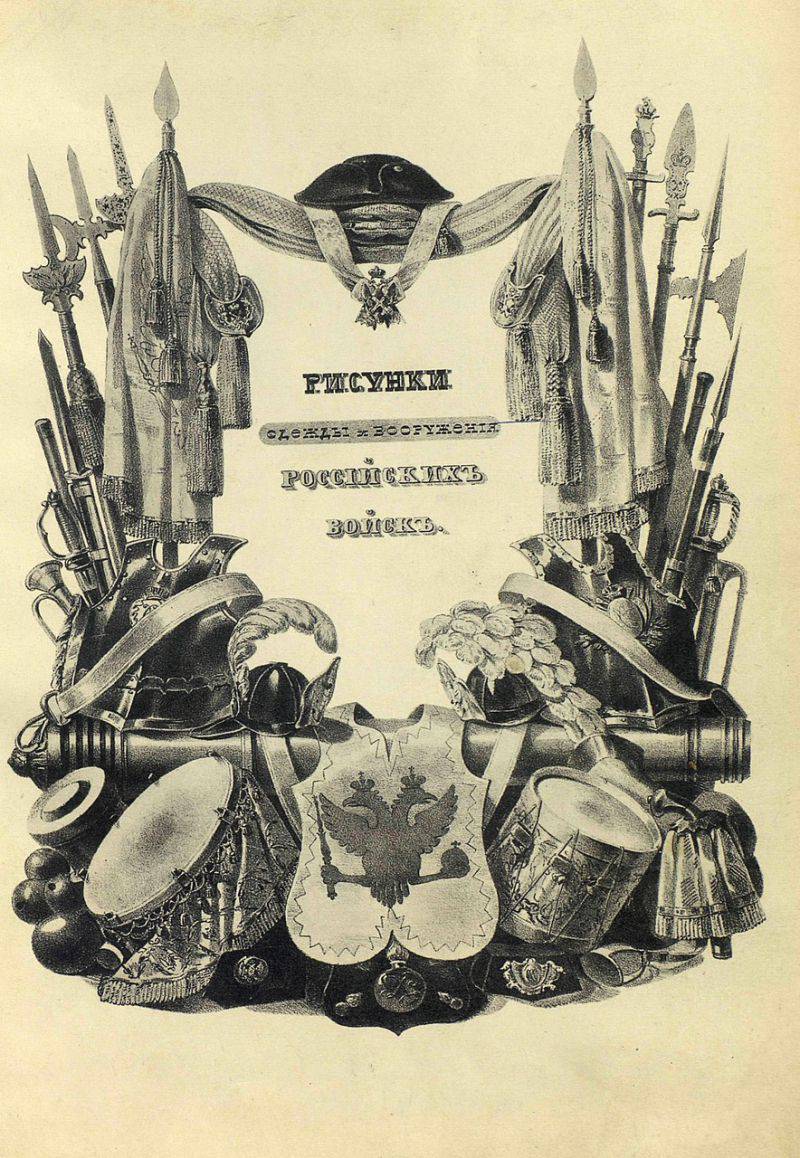
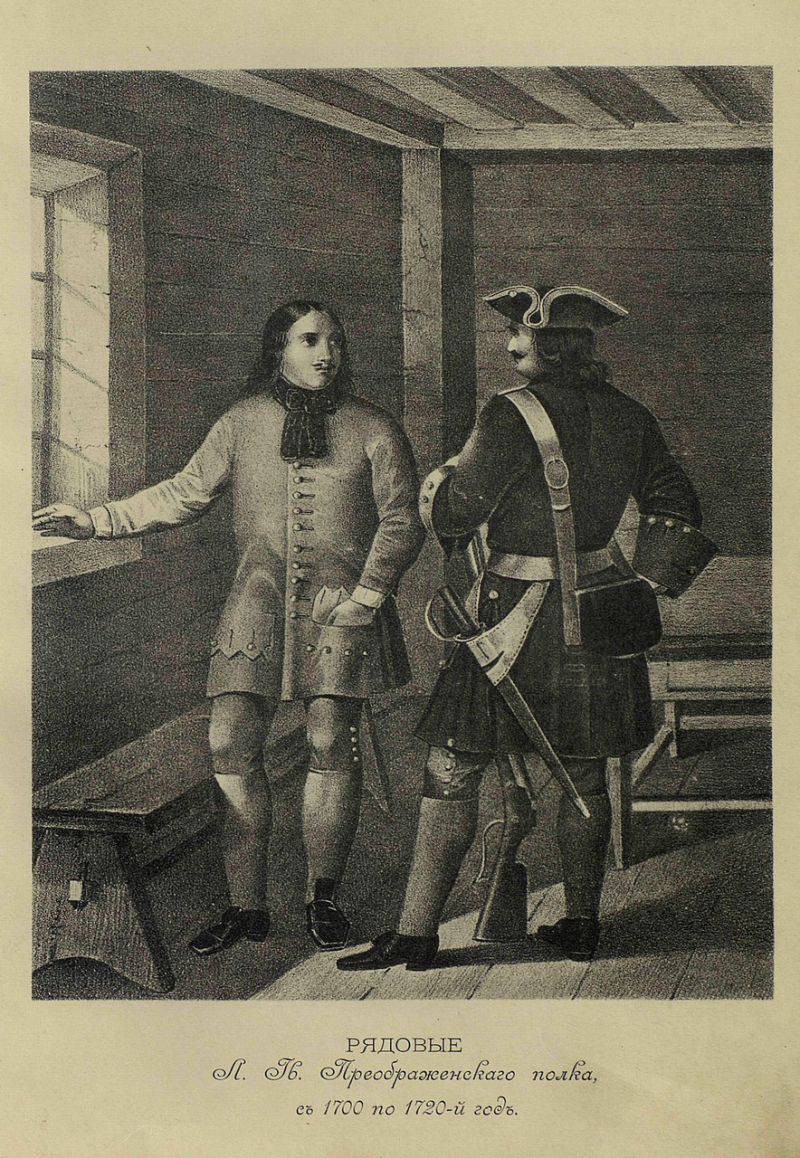
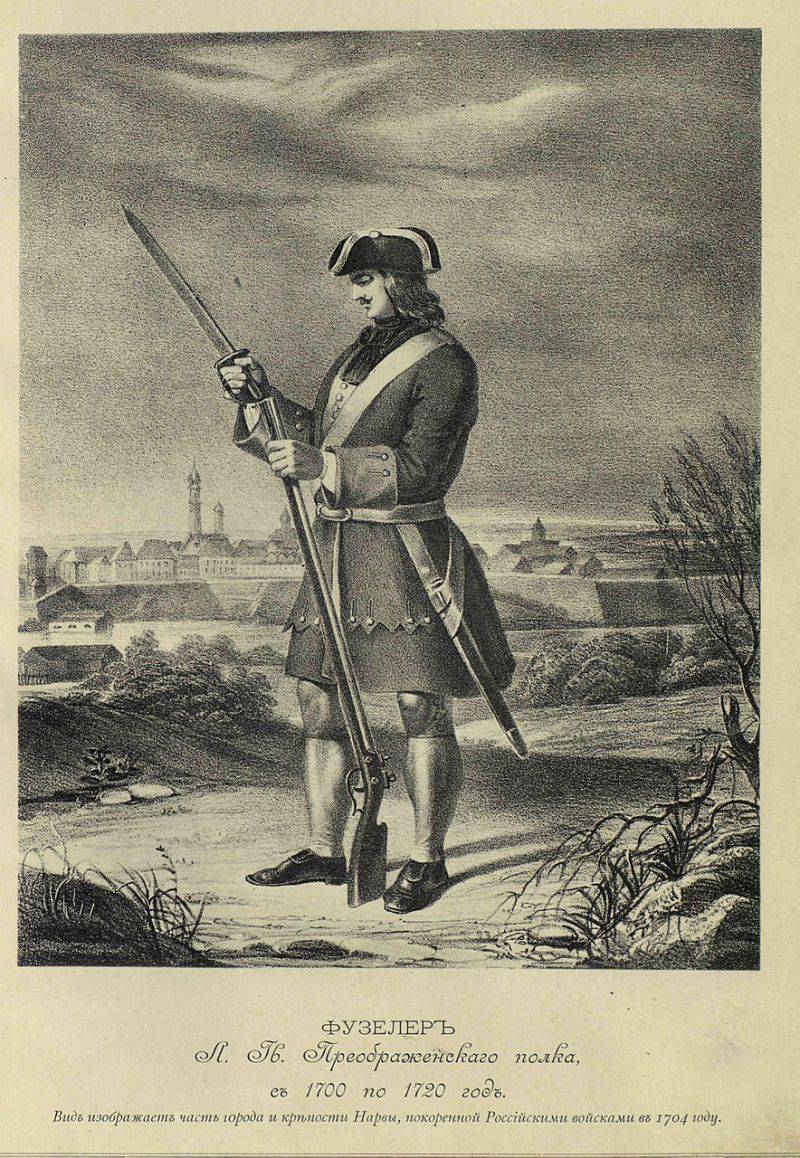
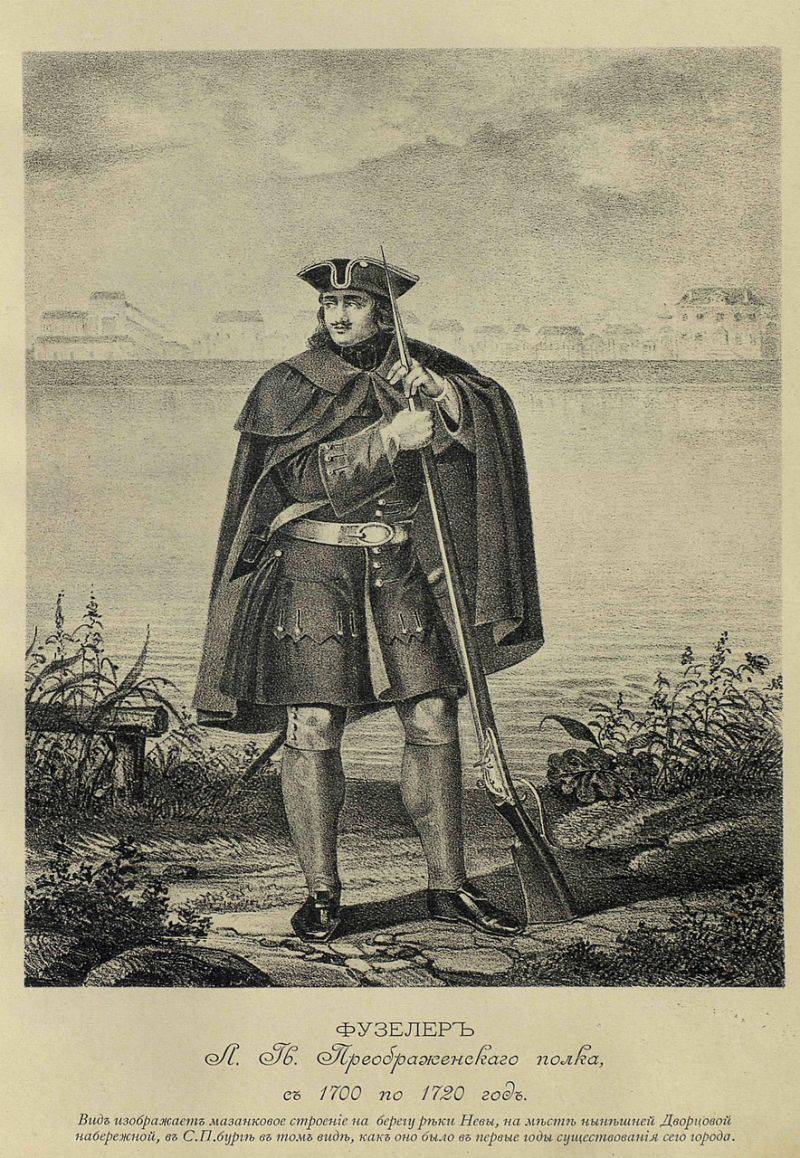
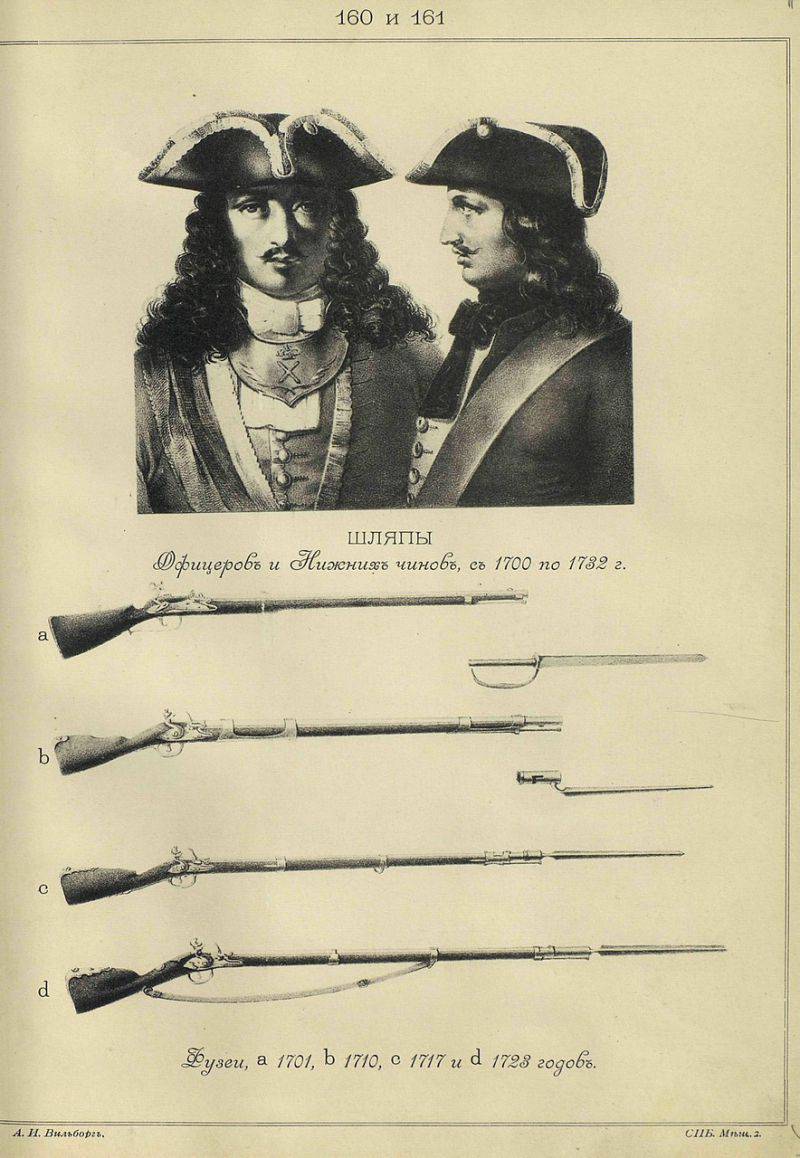
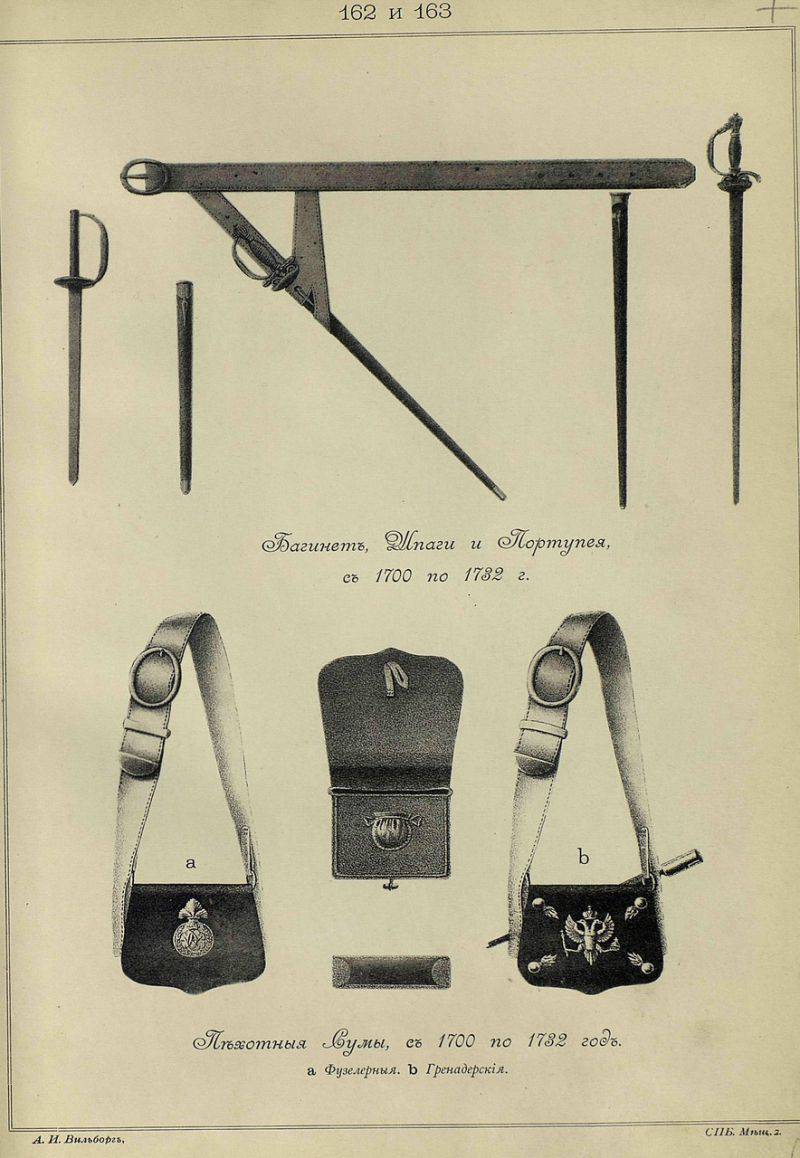
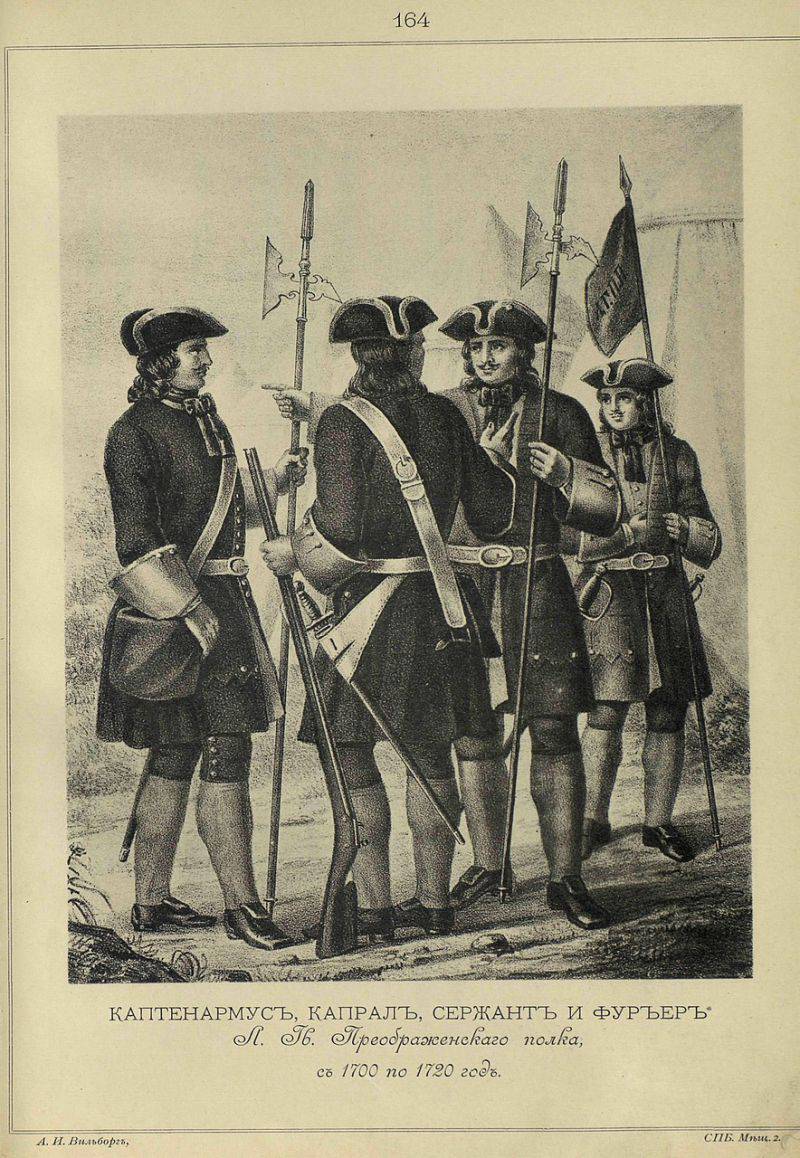
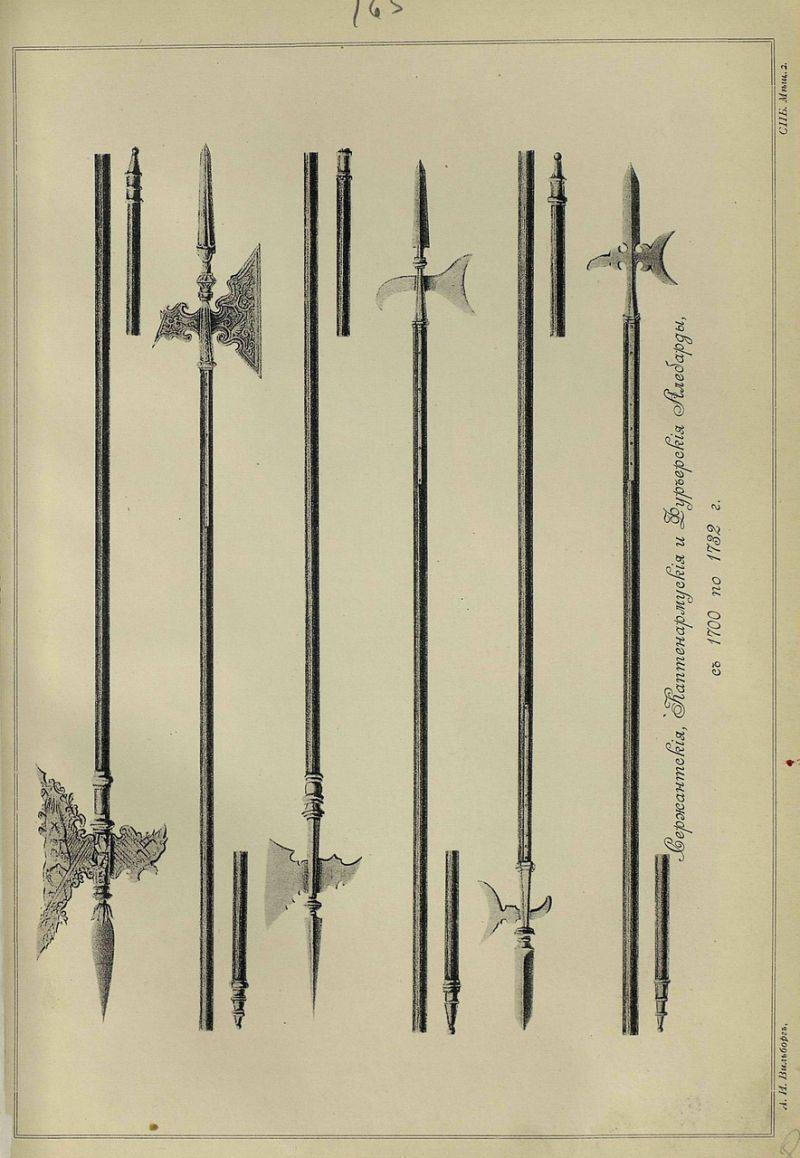
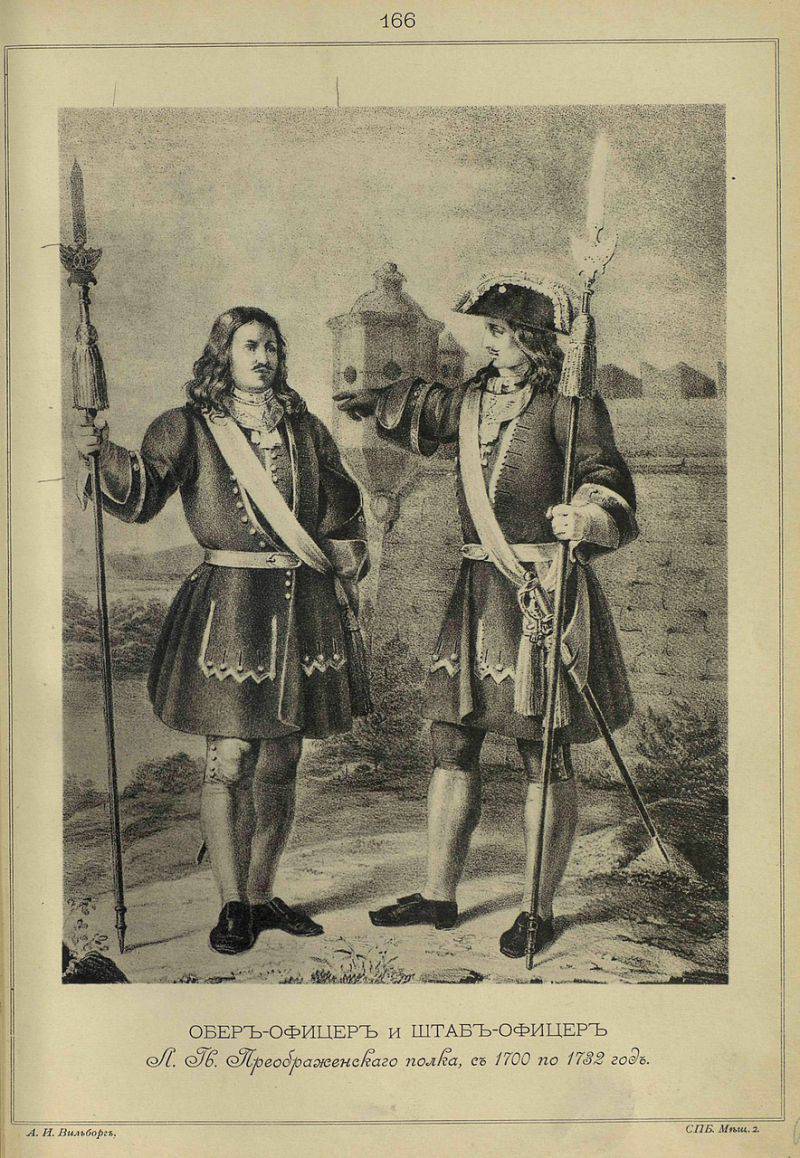
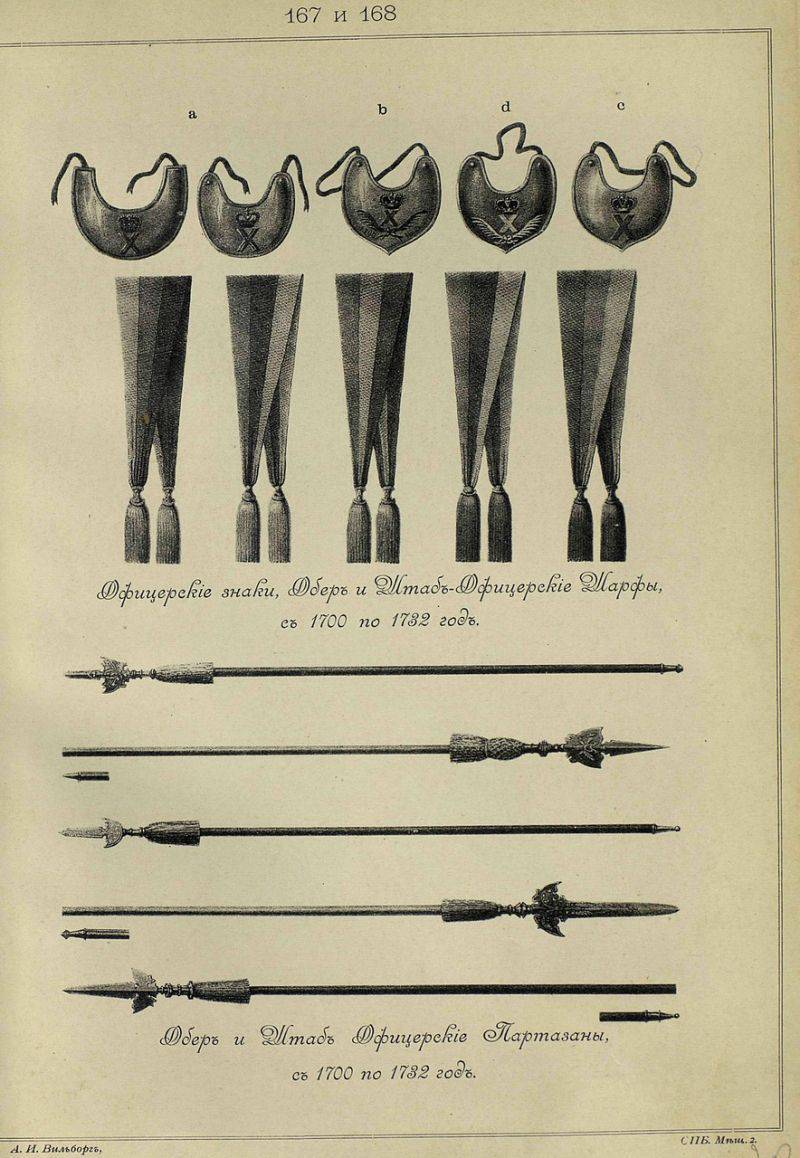
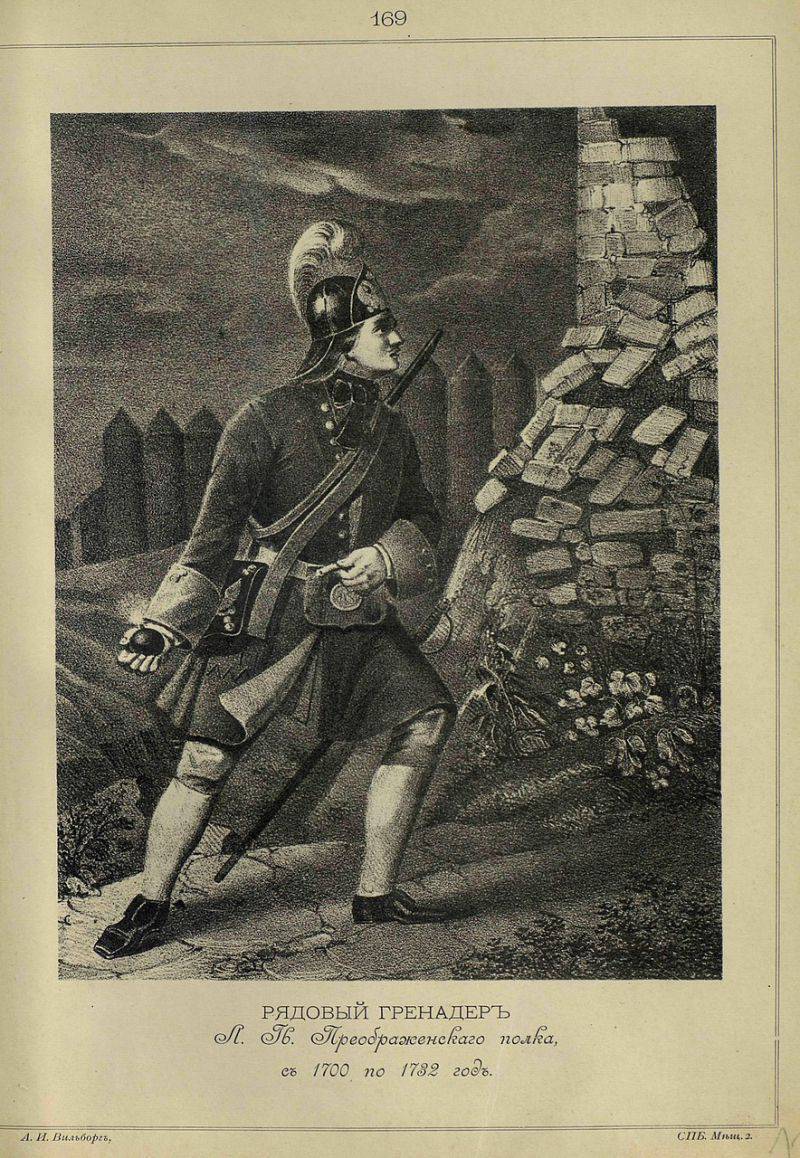
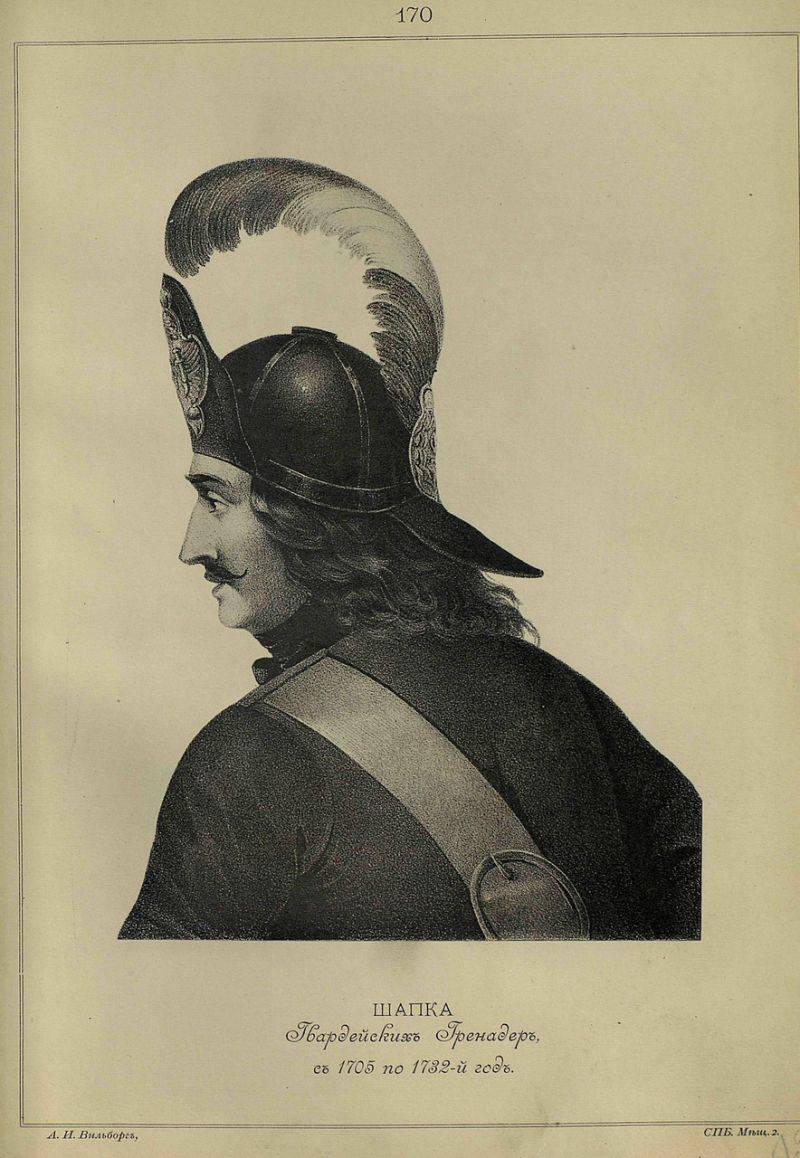
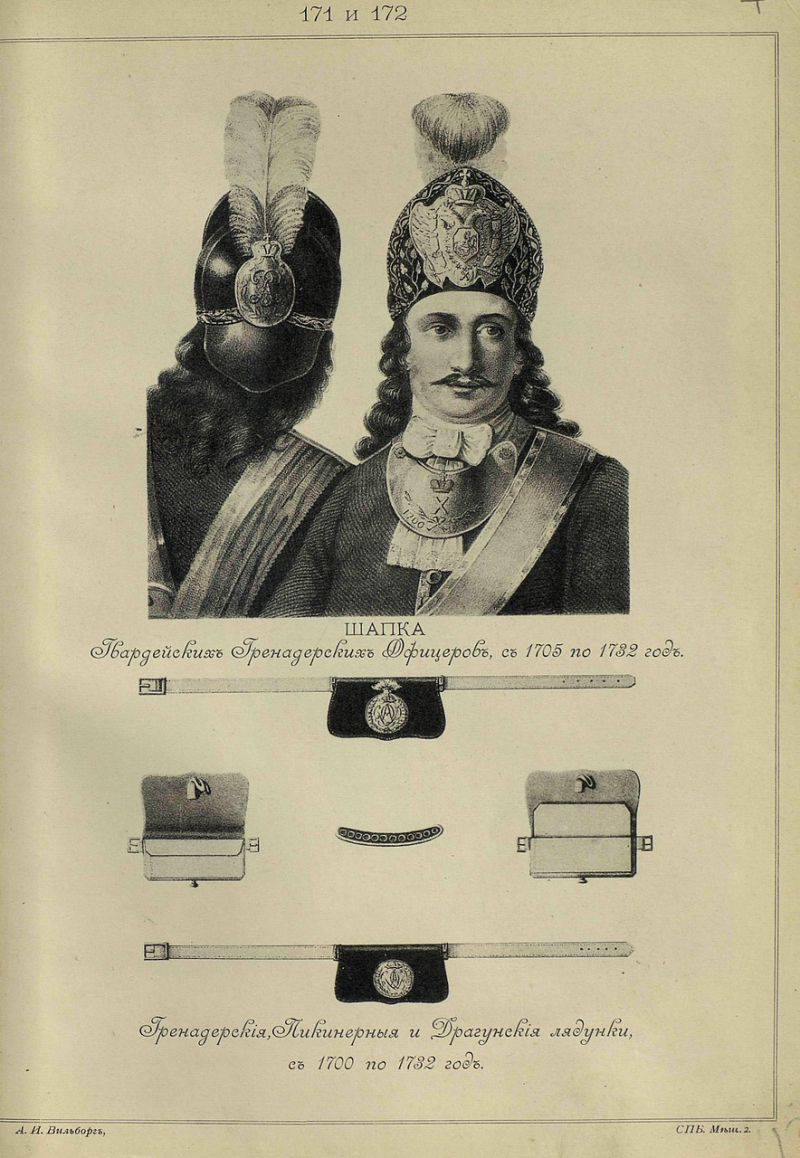
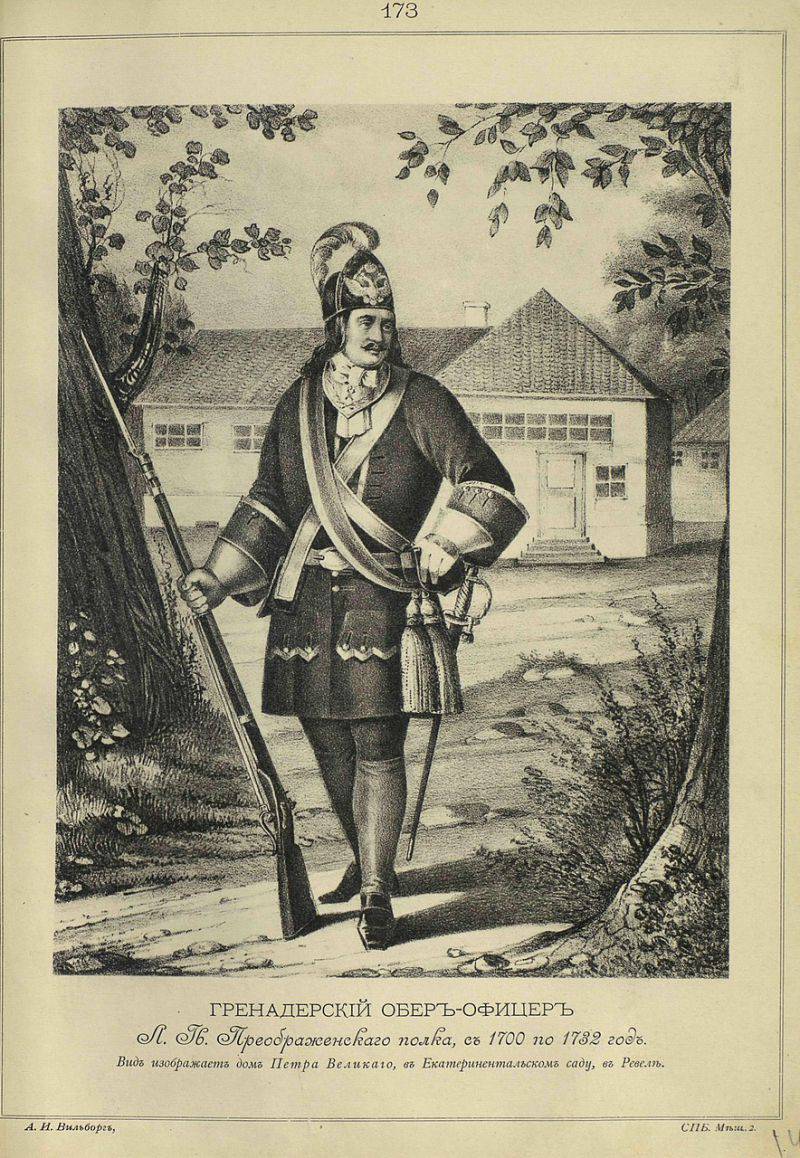
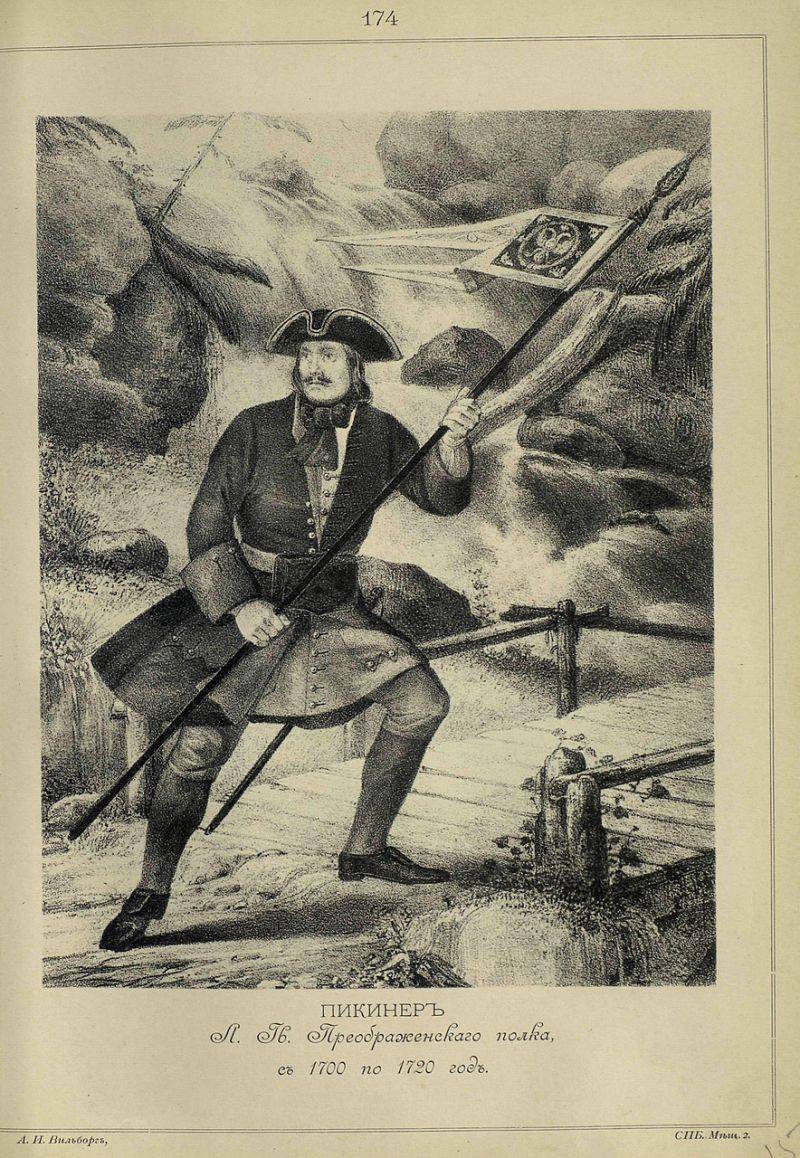
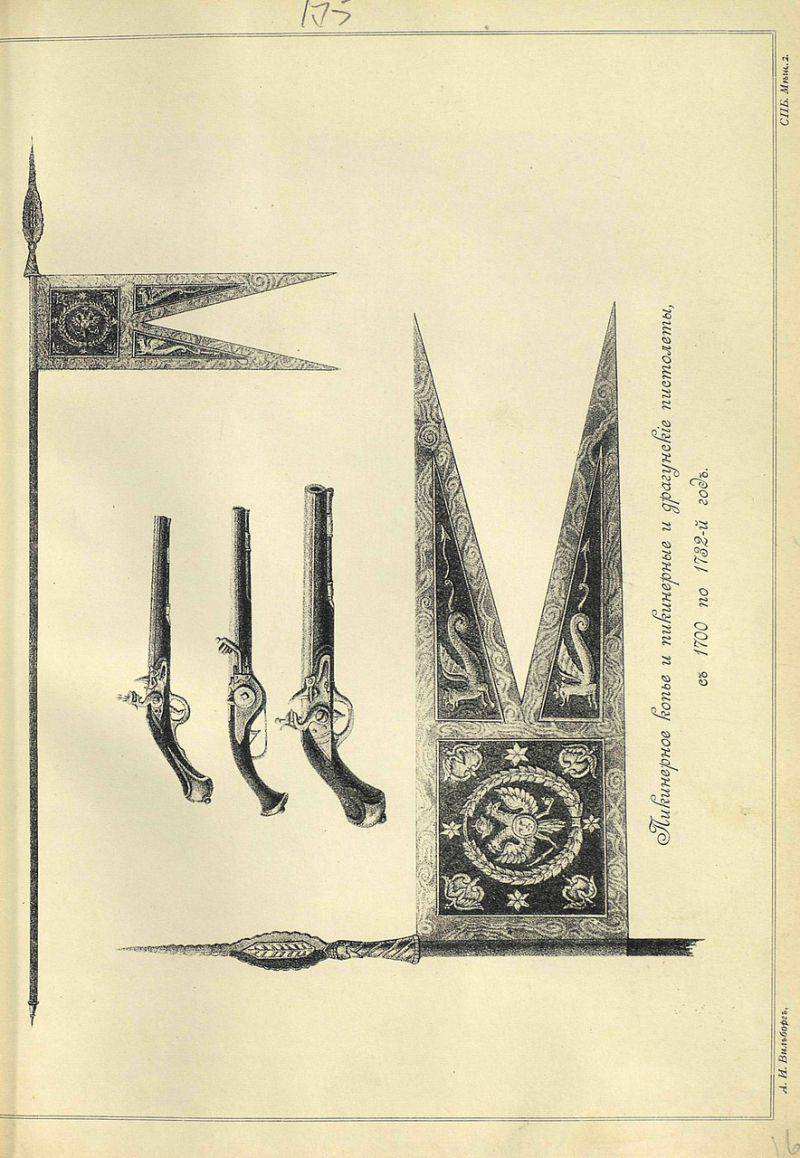

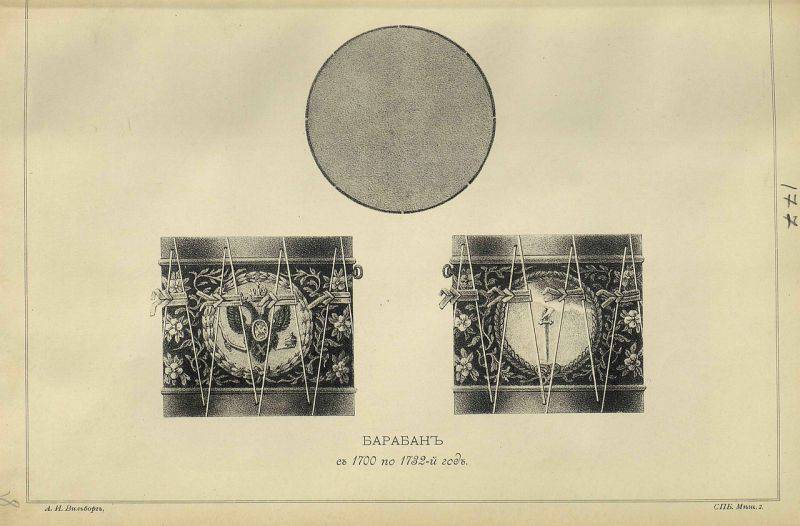
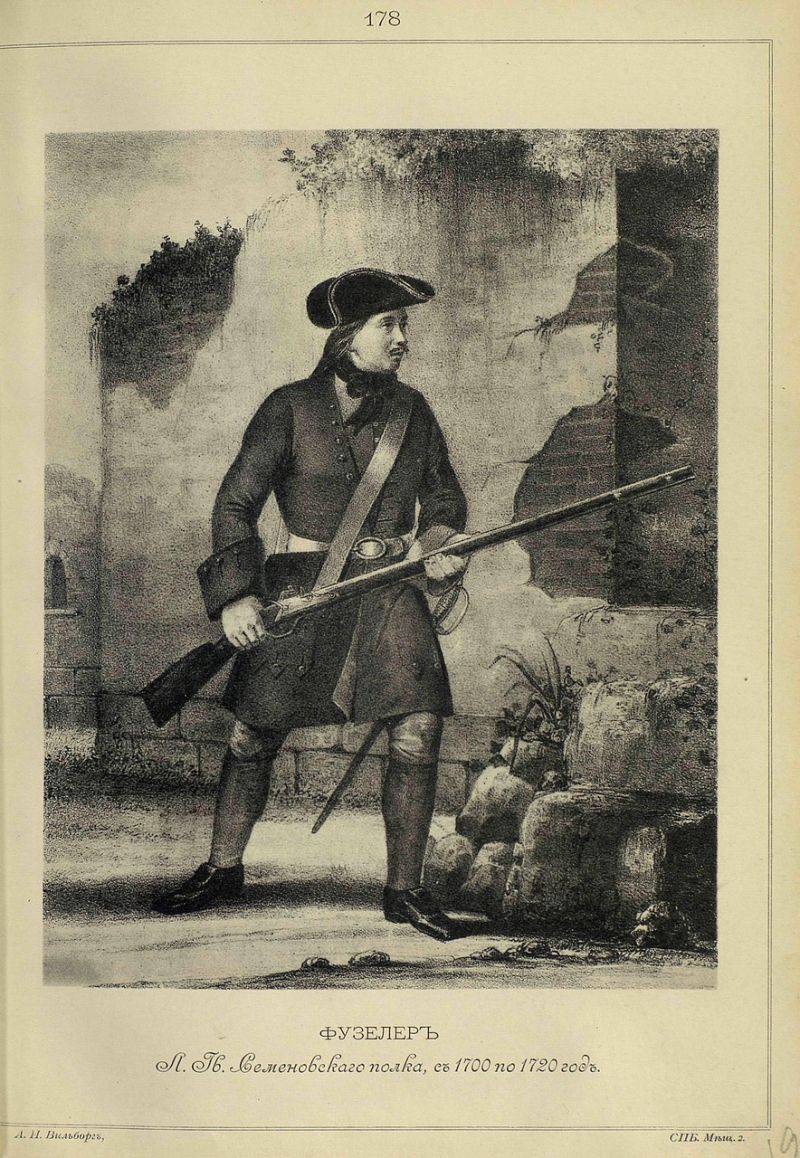
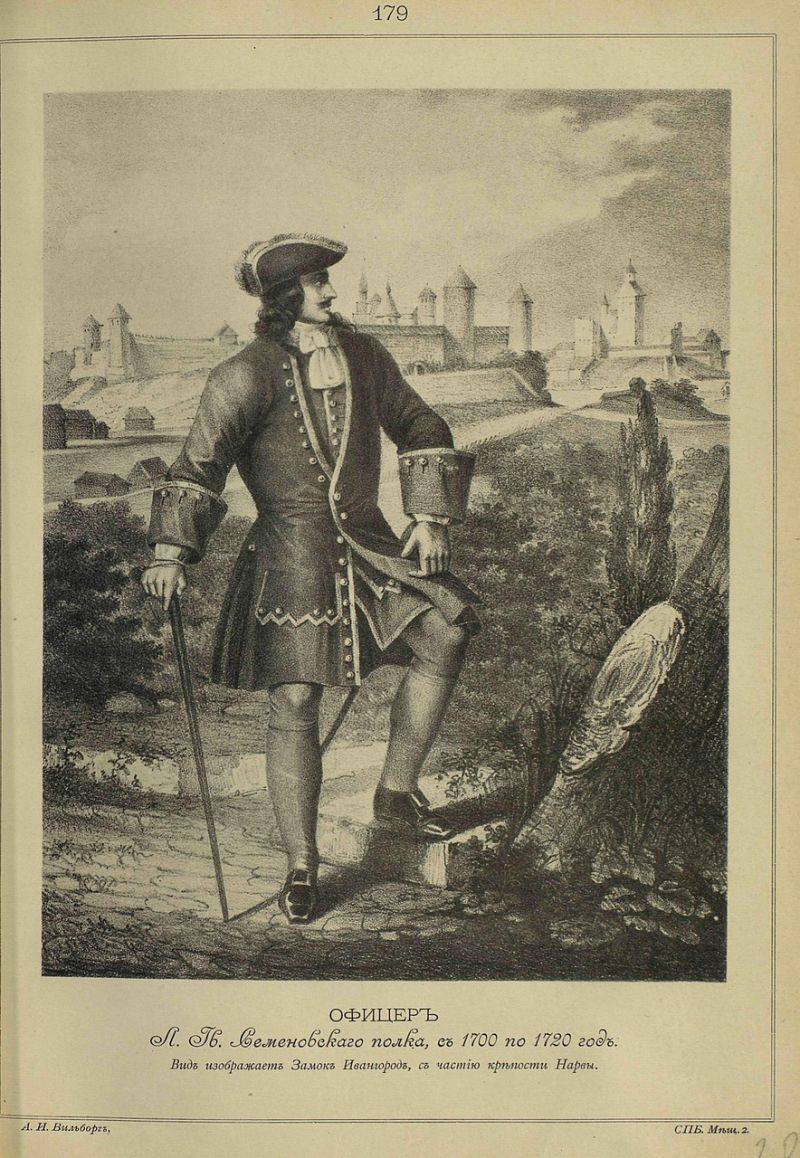
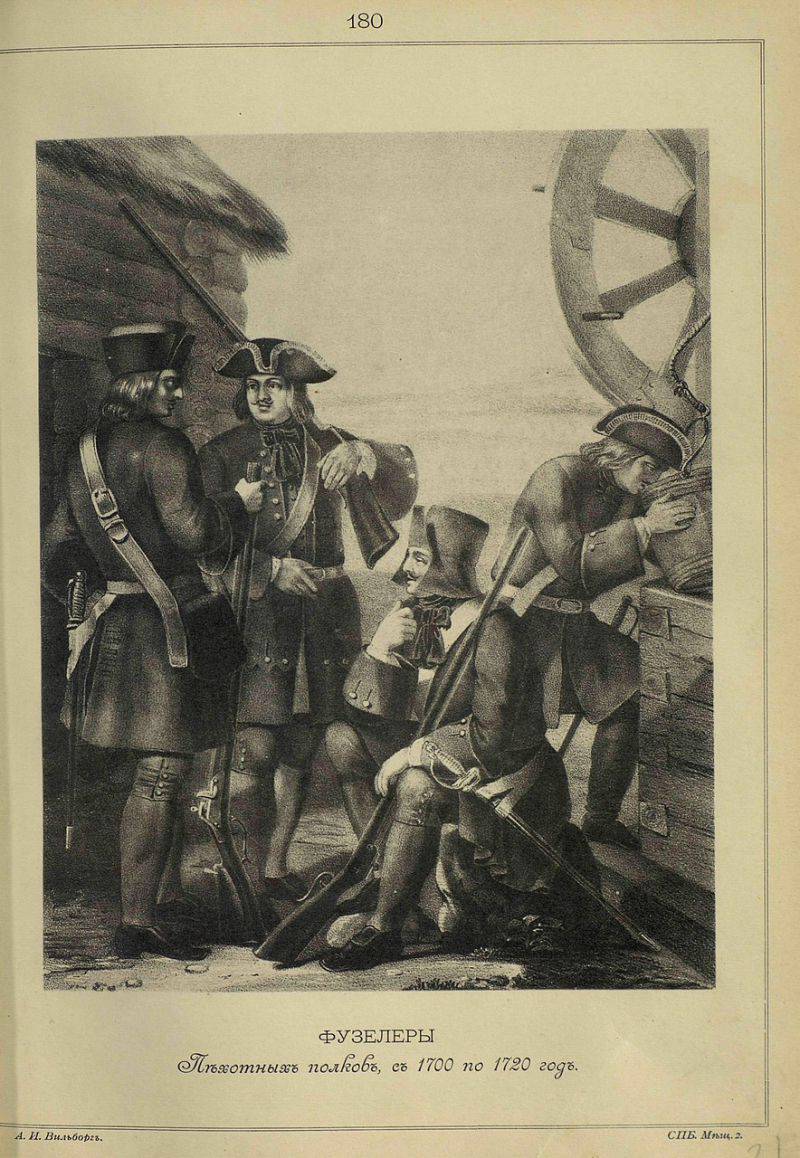
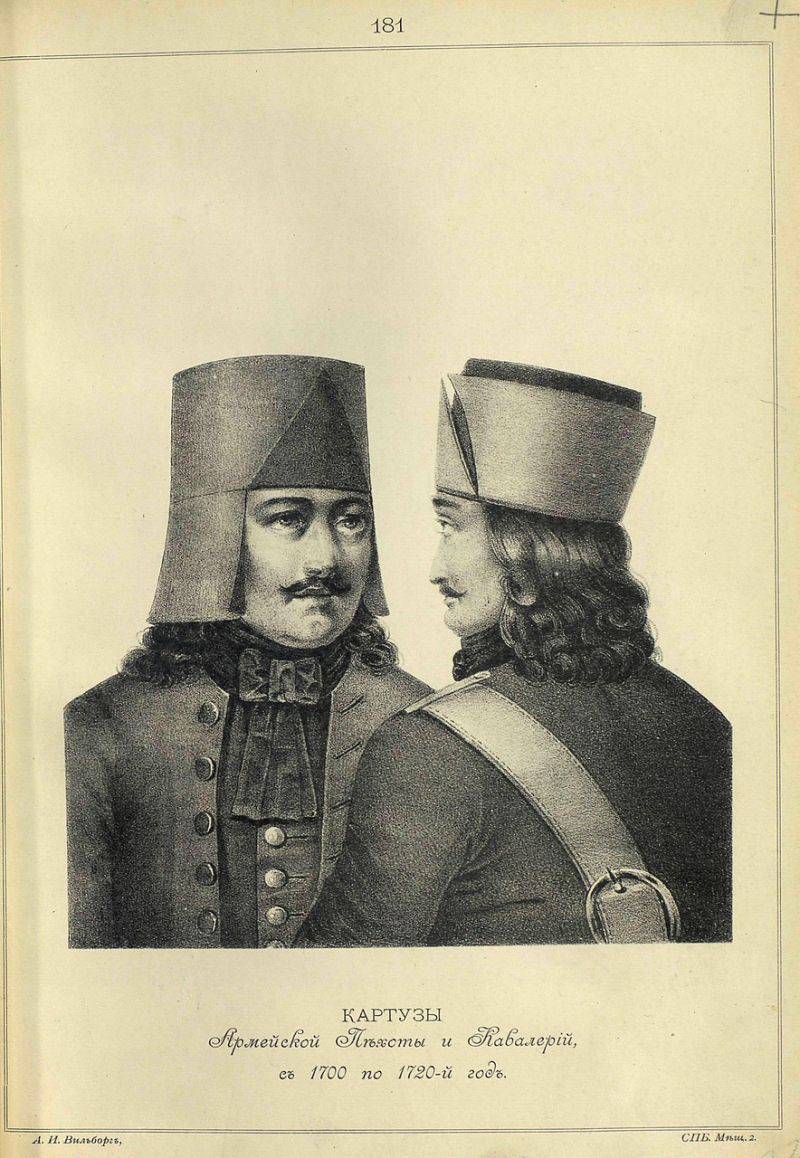
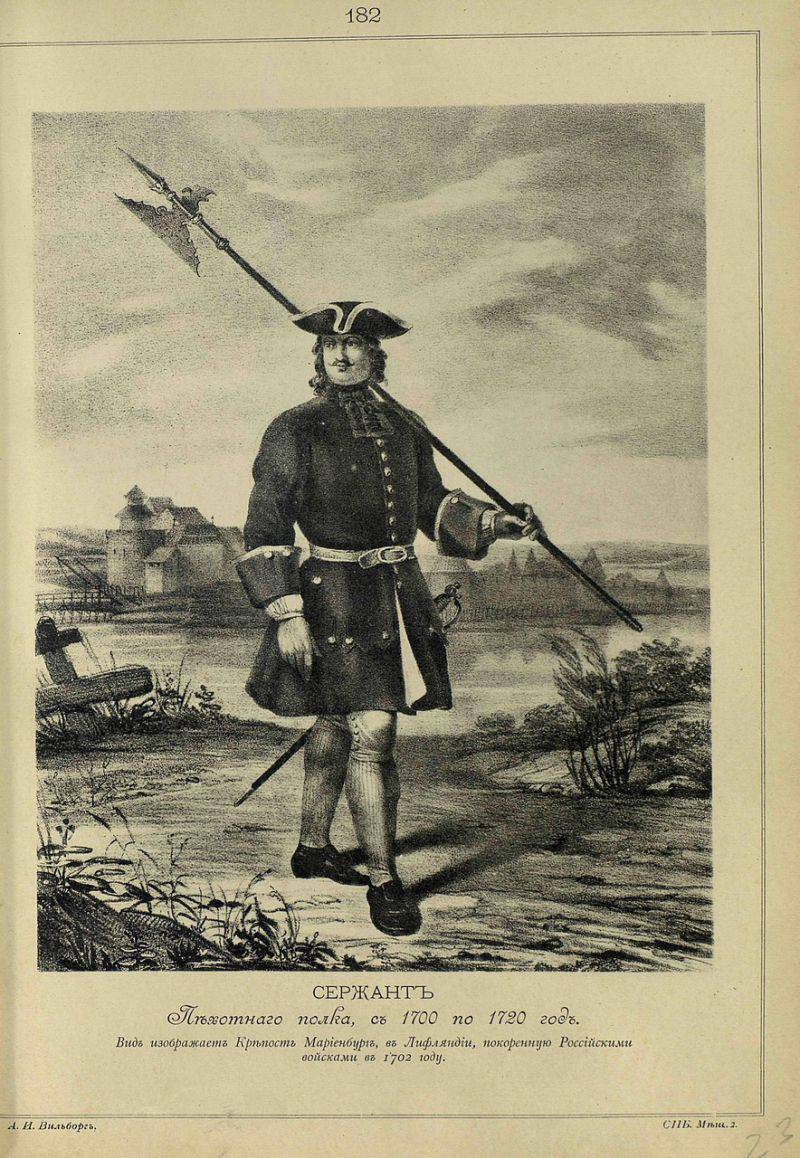
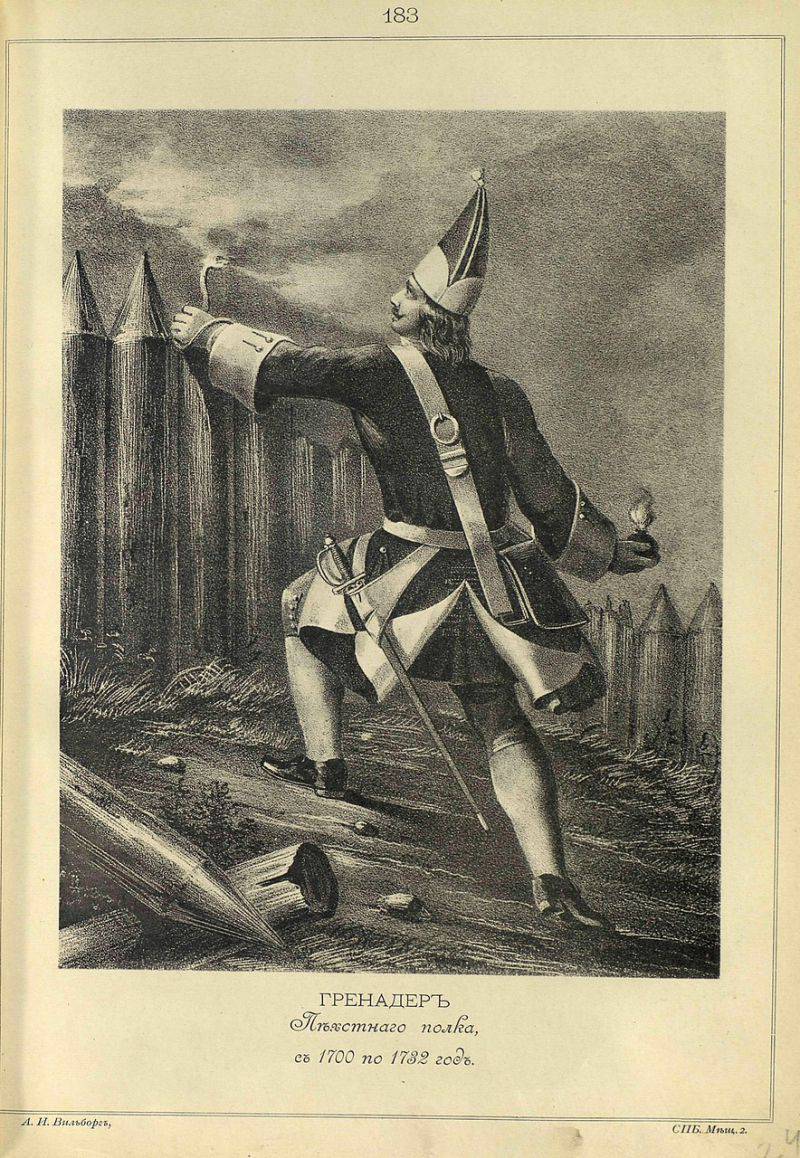
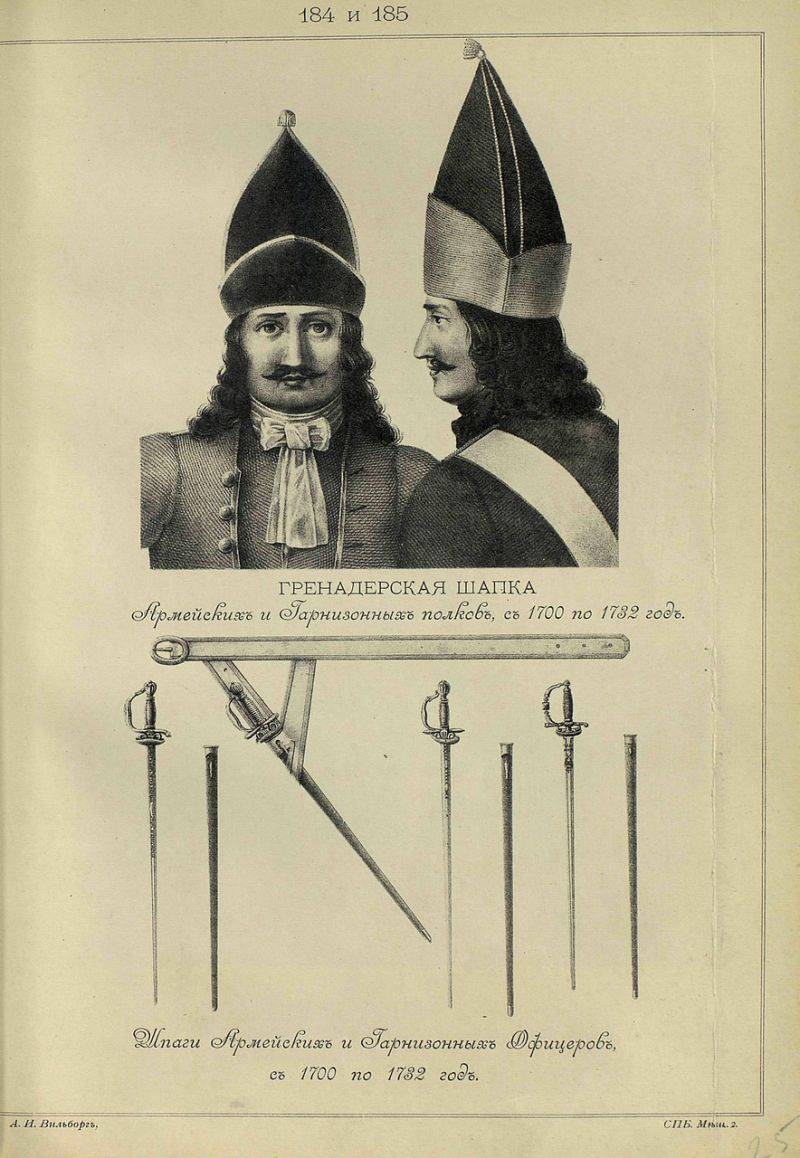
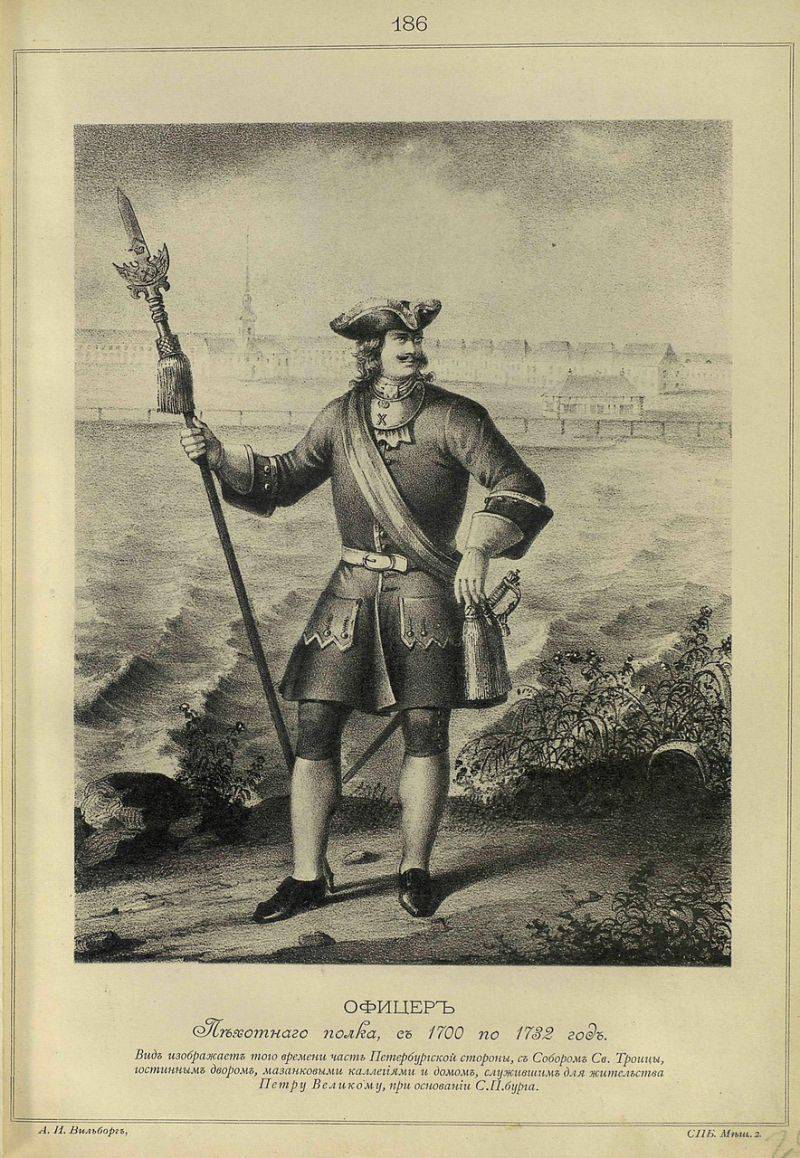
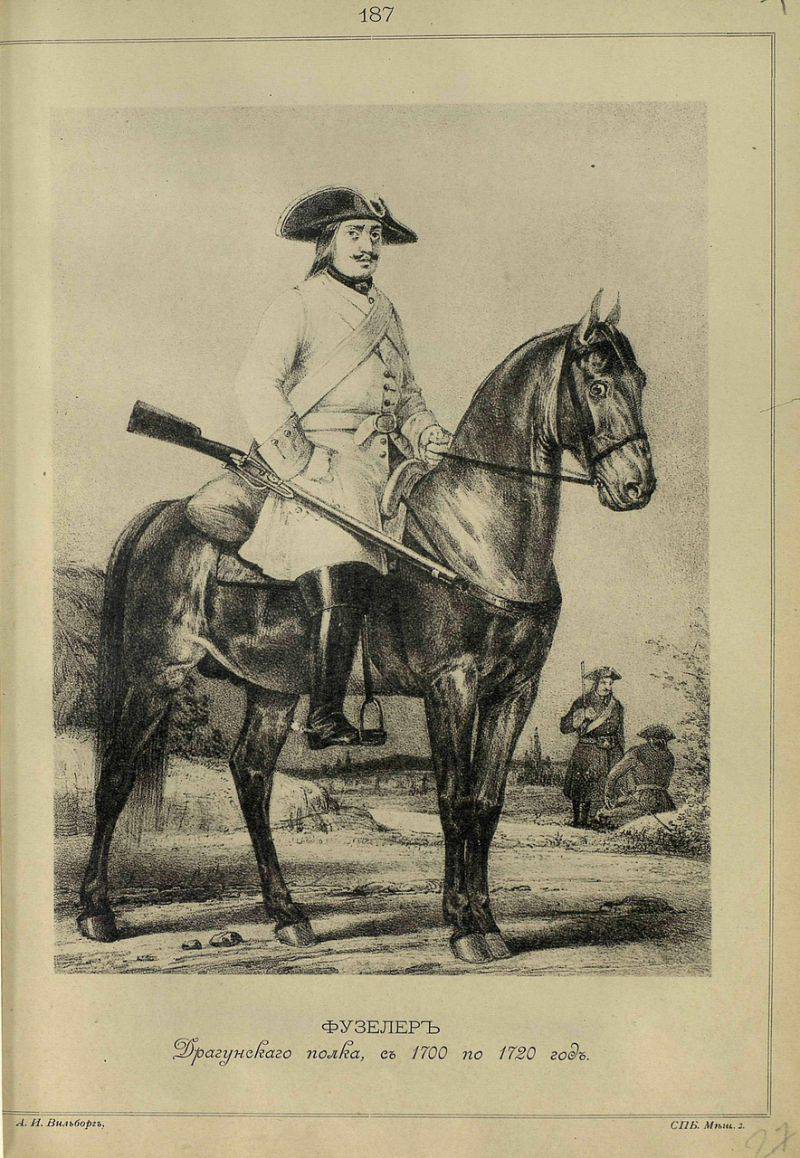
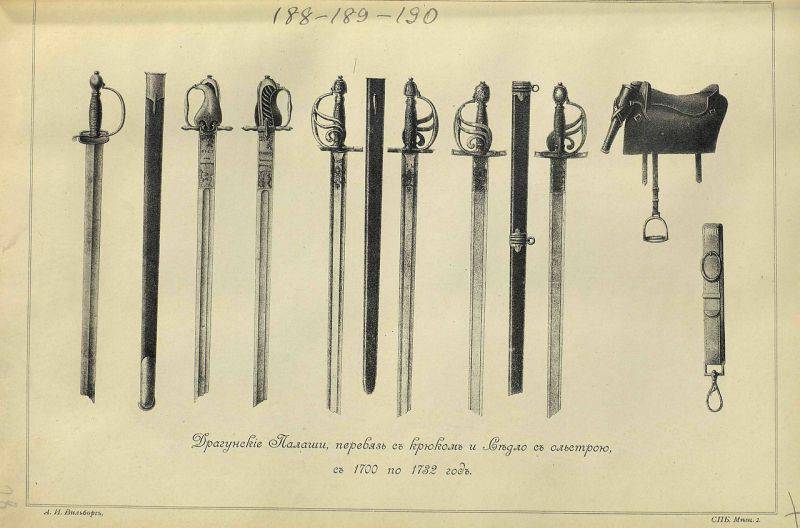
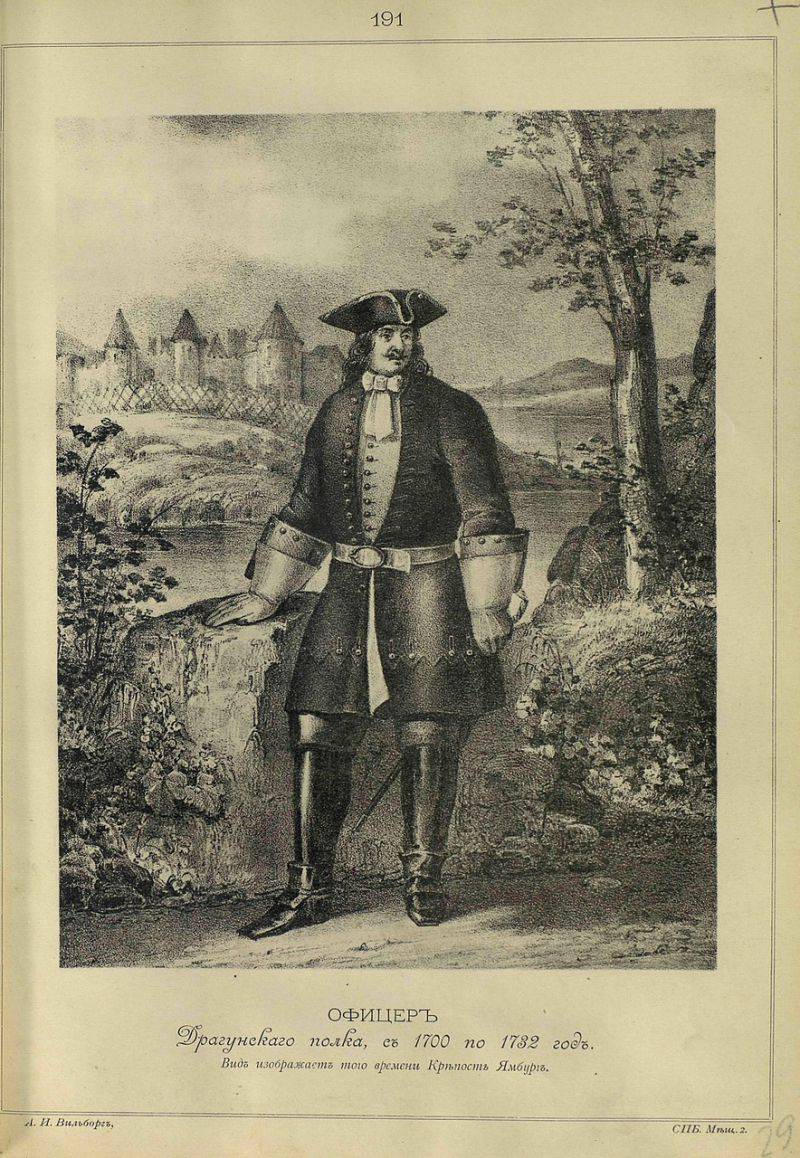
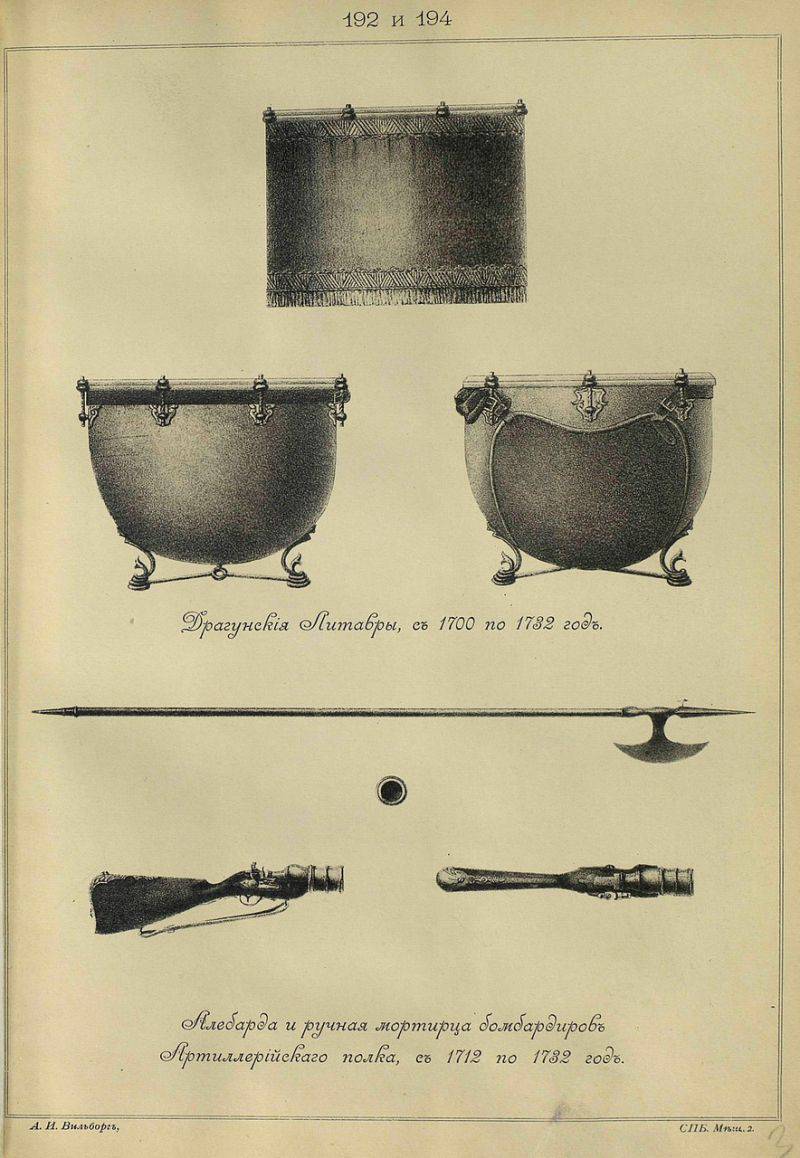
Information